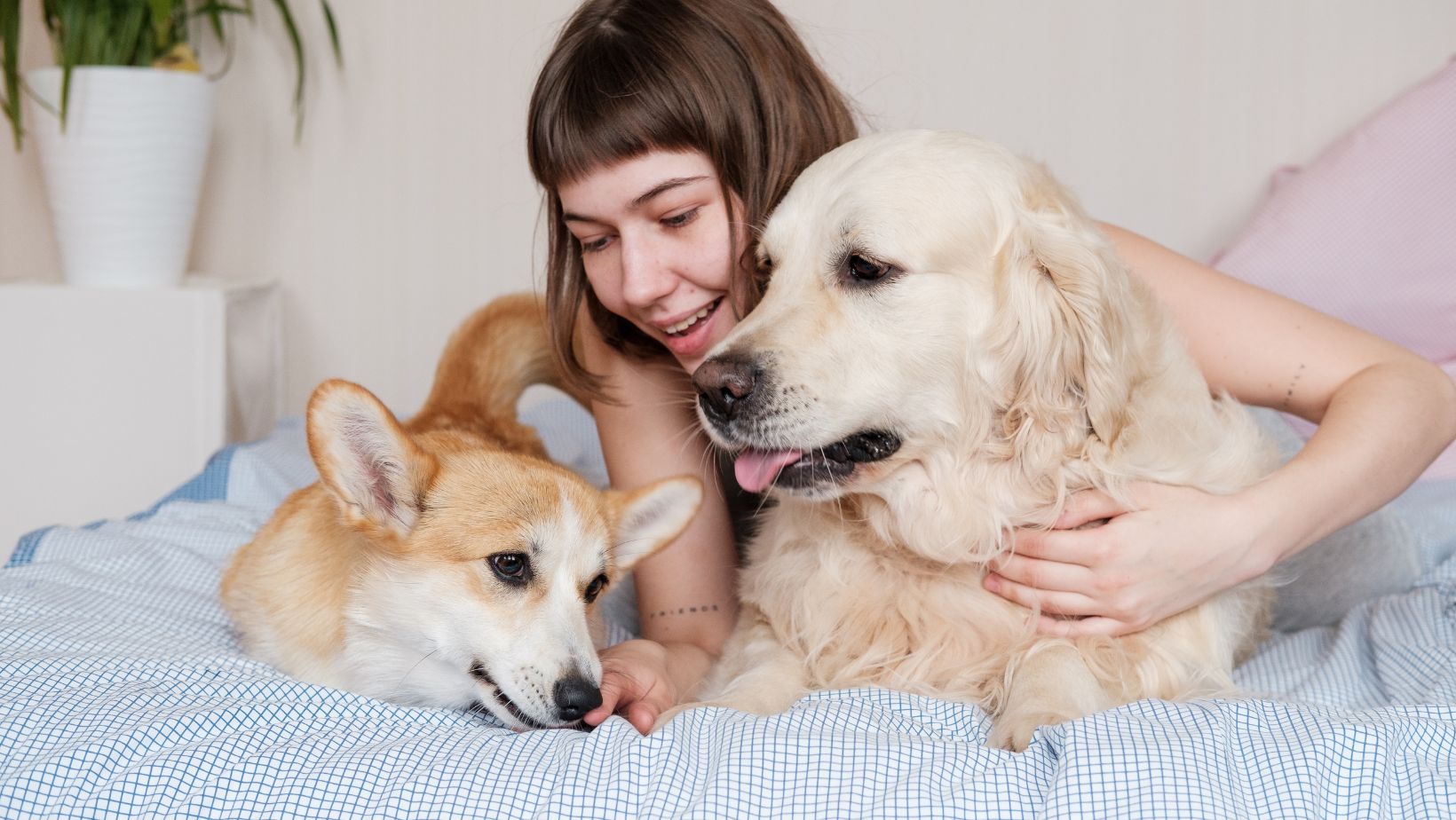Having pets at home brings a lot of love, fun, and comfort. But it can also affect the air you breathe indoors. Pets shed hair and skin, bring in outdoor dirt, and leave behind smells that can lower air quality. These things may not be visible, but they can still cause problems—especially if someone in your home has allergies or asthma. With the proper habits and tools, you can enjoy your pets and still have clean, healthy air in your home.
Pet Dander Is a Major Allergen
Understanding What Pet Dander Is
Pet dander is made of tiny flakes of skin that animals shed naturally. It’s so small and light that it floats in the air and settles on furniture, clothes, and carpets. You can’t see it, but it’s almost always there if you have pets. Dander contains proteins that are recognized by the immune system as allergens, often resulting in sneezing, coughing, and itchy eyes. Even if you clean frequently, dander can build up without you realizing it. That’s why it’s essential to know how to control it.
Dander’s Effect on Allergies and Asthma
Persons with respiratory conditions such as asthma or allergies tend to exhibit heightened sensitivity to pet dander. It can make breathing harder and trigger sneezing, runny noses, or even asthma attacks. These reactions don’t always happen right away, so it can be hard to tell what’s causing them. If someone in your home has breathing issues, dander might be part of the problem. Keeping it under control can make a big difference. Clean air helps everyone breathe easier, pets included.
Why All Pets Produce Dander
Every warm-blooded pet produces dander—no matter the breed. Even “hypoallergenic” animals still shed some dander.

You can’t stop it entirely, but you can reduce how much stays in your home. Grooming, cleaning, and using air filters all help. It’s not about getting rid of your pets—it’s about keeping your space as healthy as possible.
Regular Cleaning Helps Reduce Airborne Particles
Vacuums as a Key Tool
Using a vacuum with a filter is one of the best ways to clean up after pets. Filters catch tiny particles like dust and dander that other vacuums may miss. Vacuuming regularly helps keep these allergens out of the air. If you have carpets or rugs, you might need to vacuum more often. A good vacuum can also clean furniture where pets like to relax. Cleaner floors mean cleaner air for everyone.
Pet Bedding and Soft Surfaces Matter
Soft surfaces like beds, blankets, and cushions trap hair and dander. Pets spend a lot of time on these, so it’s essential to clean them often. Bedding should be laundered in hot water to effectively eliminate allergens and microbial contaminants and remove odors. Even your own couch or curtains can hold onto pet-related particles. It doesn’t take long, but it makes a big difference.
Hair Is More Than Just a Mess
Pet hair is more than just something to sweep up. It holds onto dust, pollen, and other things that lower air quality. When hair moves around the house, these particles can end up in the air. That’s why removing hair regularly helps keep your home fresh. It’s not just about looks—it’s about health too. Less hair means fewer things floating around in the air you breathe.
Proper Ventilation Improves Air Quality
The Power of Fresh Air
Opening a window for a few minutes a day can improve your indoor air. Fresh air pushes out the stuffy, stale air that holds allergens and smells. Even in winter, a quick burst of outside air can help clear the air inside. Pets add moisture and odors, so ventilation is key. A little bit of fresh air each day keeps your home feeling cleaner. It’s an easy habit that goes a long way.
Exhaust Fans Make a Difference
Exhaust fans in bathrooms, kitchens, and laundry rooms help move moist air out of the house. This keeps humidity under control and reduces the risk of mold. Pets can raise humidity just by breathing, drinking, and playing indoors. Too much moisture makes it easier for allergens to grow and spread. Using fans during showers, cooking, or after cleaning helps manage this. It’s a simple way to keep your air healthier.
Why Stale Air Increases Exposure
When the air stays still, pollutants like dander and odors remain trapped. Over time, they build up and become more concentrated. This can make allergy symptoms worse and leave your home feeling stuffy. Moving air around helps get rid of these hidden pollutants. Whether it’s a ceiling fan, an open window, or a small air circulator, airflow makes a big difference. Don’t let stale air stick around.
The Role of Air Filters in Managing Pet-Related Indoor Air Quality
HVAC Maintenance and Filter Upgrades
If your home has central heating or air conditioning, your system already uses air filters. Upgrading to a better filter—like one rated MERV 11 or higher—can catch smaller pet particles. These filters need to be changed regularly to work well. A clogged filter won’t clean the air and can make your system less efficient. Set a reminder to check or change your filters every few months. It’s a small task that makes a big difference.
Activated Carbon for Odors
Some air filters also include activated carbon, which helps remove smells and chemicals. This is great for homes with pets, especially if you have litter boxes or strong-smelling pet food. Carbon filters absorb odor-causing gases, not just trap particles. You can find them in many air purifiers. Together, they clean both the air you see and the smells you don’t. Your home will smell fresher without needing sprays or perfumes.
Pet Odors and VOCs Affect Air Quality
Sources of Pet Odors Indoors
Pet smells come from natural oils, saliva, and waste. When pets lie on furniture or rugs, those smells can get stuck in the fabric. Even clean pets have a scent that builds up over time. These odors don’t always mean something is dirty—but they do affect how your home smells and feels. If you’re noticing a lingering pet odor, it might be time to deep clean some surfaces. Managing the smell helps make your home feel more comfortable.
VOCs from Pet Products and Cleaners
Some pet sprays, shampoos, and cleaning products release VOCs—gases that lower indoor air quality. These gases can cause headaches, irritation, or breathing problems in sensitive people. Even products labeled “pet-safe” might include strong fragrances or chemicals. Using too many of them can fill the air with things you don’t want to breathe. If your home feels stuffy or chemical-scented after cleaning, VOCs could be to blame. Less is often more when it comes to pet care products.
Choosing Safe and Low-Impact Products
Switching to gentle, low-VOC cleaners and pet products helps protect your air. Look for options labeled fragrance-free or plant-based. These usually work just as well without filling the air with chemicals. You can also make your own cleaners with vinegar and baking soda for safe, simple results. Fewer sprays and less fragrance mean fewer irritants in the air. The result? A home that feels clean and smells naturally fresh.
Conclusion
Pets are part of the family, and keeping them healthy goes hand-in-hand with caring for your home’s air. Even though pets can add dander, odors, and allergens to the environment, small changes make a big difference. Cleaning regularly, letting in fresh air, using air filters, and choosing safe products all help improve indoor air quality. These steps don’t have to be difficult—they just need to be consistent. The reward is a home that’s comfortable for both people and pets. With some effort, you can breathe easier and enjoy your pet-filled space every day.















